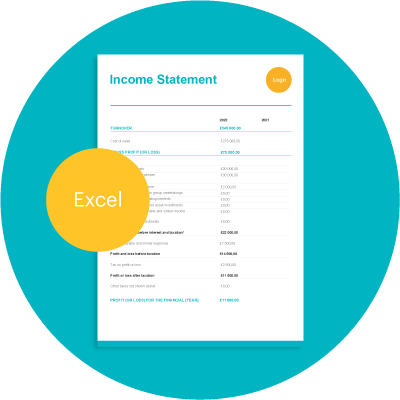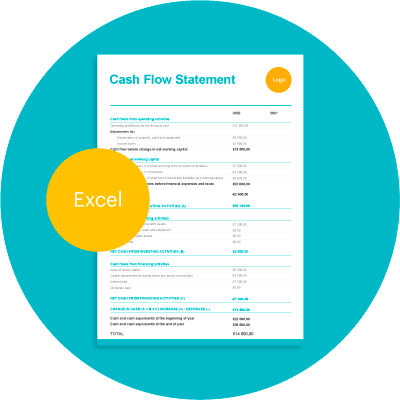
How To Write Your First Business Plan
This article is a guide on how to write your first business plan. Before you start reading, download our free business plan template.
Writing a business plan may seem like a daunting process as it’s often the first step on one of the most challenging journeys of your life. But it doesn’t have to be a frightening experience. This plan will act as a framework for starting up and will be your partner over the years as your business grows and changes.
Remember that millions have traveled this road before you. The biggest companies in the world all started with the development of a business plan – Apple, Amazon and Microsoft all began this way and now it’s your turn.
We are here to help you create the very best business plan to help your company get off the ground and grow. Our free template can take the stress out of compiling a business plan and allow you to concentrate on the products or services that your company will bring to the market.
Table of Contents
What is a business plan?
So, first things first – what is a business plan? It’s a thing that almost everyone has heard of, but very few have had to create. In the simplest of terms, it is a written description of your business and its future. It tells the reader exactly what you plan to do and how you plan to advance and achieve your goals.
As well as providing information for others, it should also allow you to streamline ideas and zero in on exactly what you want to provide customers. Think of it as the scaffolding around which your business can be built.
It will allow you to see any weaknesses early in the business development process so you may rectify them before they become a big – and expensive – problem. An added benefit is that by following your business plan, you will reduce the workload involved in starting a business (trust us, it’s no walk in the park).
Know your audience
While your business plan is for you, its also used to communicate your ideas and research to others – but who else will read the document? Will it be sent to potential investors or will it be used as part of a grant application? Knowing your audience can help you tune the features of your plan to suit.
You may be an expert in the field you’re looking to expand into, but remember that not everybody will understand the technical jargon that you use every day. Call a spade a spade, rather than an ‘optimal soil displacement implement’. Nothing makes people switch off quicker than something they don’t understand.
As you develop your plan, remember to add in aspects that will set you apart from the crowd. It’s standard practice to build in cash flow forecasts, marketing and sales budgets, profit and loss scenarios and other financial forecasts but what’s overlooked is the wider purpose of your enterprise.
Yes, businesses are primarily about the production or provision of goods or services in pursuit of financial profit, but consider this – a wider social, humanitarian or economic goal sets your business apart and provides purpose for the people involved. This is paramount in today’s connected, hectic world.
Remember, your plan is as much a tool for learning as it is for communicating an idea. We’ve developed a handy ideas board called “The Gap Canvas” which should help you structure your thinking and summarize any budding business ideas. This is also integrated into our plan template to replace the traditional “executive summary”.
Different business planning methods
Different businesses require different business plans, depending on what role they need to fulfill. Are you writing a plan so that you can get a bank loan or to persuade someone to invest? Or is it simply for you to get a grip on what is going to happen and iron out the kinks before launching?
One crucial aspect to bear in mind here is the length of your plan. Traditionally, plans were heavy documents that could do some serious damage if used as a weapon. However, a newer school of thought believes that it is time for a leaner, lighter and shorter plan, which gives people more chance of adapting and changing it on a regular basis.
David, who runs a successful British restaurant business, says of his plan:
“It was really daunting at the beginning, as I didn’t know how to write a plan. As I became more business-savvy, I was able to build on the plan and develop it for potential investors. It grew with me, so I would recommend keeping it short to begin with.”
The benefits of having a business plan
A great business plan is not something you write at the beginning of your journey through some sense of obligation and then chuck in the bottom drawer. Instead, it should be a tool that helps and guides you as your company develops.
It may come as no great shock that the business world is neither straightforward nor easy. There is no doubt that your company will have to change direction, sometimes repeatedly, before you settle on a structure that works for you. So, allow your business plan to change, adapt and develop alongside you.
In fact, the plan you write at the beginning may look entirely different two, three or five years down the line.
The Harvard Business Review says of your original plan:
“The real key to succeeding in business is being flexible and responsive to opportunities. Entrepreneurs often have to pivot their business once it becomes clear that their original customer is not the right customer, or when it turns out that their product or service fits better in an alternate market. Because of these realities, business plans written at the start end up nothing more than a fable.”
Business plans also create a history of your company. If the time comes to open up to prospective partners or investors, being able to prove how you have adapted and evolved shows initiative and business acumen, while a current and innovative plan lets others know that you have your finger on the pulse and are prepared for every eventuality – both good and bad.
Many employers also find it beneficial to show current and prospective employees their business plan, so they gain a full understanding of where the company is going. Presenting them with an outdated document will help no one. Finally, you never know when you might need to write another business plan, so it always helps to look back at your progress.
Writing your business plan – step by step
So, now that we’ve talked about the importance of your plan and why you should have it, the time has come to take the plunge and make a start. Our business plan template includes instructions on filling out the document as well as examples of a fictional company to give you some inspiration.
We have drawn elements from a modern business modelling method utilized by the very popular “lean canvas” and “business model canvas”, whilst also including the more comprehensive aspects from traditional business plans which have stood the test of time.
You can download both “The Gap Canvas” or full business plan template, which also contains the canvas as a summary page. Think of “The Gap Canvas” as a place to play around with your ideas, set your goals in stone and create a mind map before moving into the deeper sections of your plan.
Sometimes, it can help to draft the first version the old-fashioned way – on pen and paper. If you would like to do this then there’s also a blank version.
Five key considerations when starting a business
How to fill out The Gap Canvas
We have included the canvas in our full plan template to not only replace the usual executive summary, but to help you identify five key areas that are crucial to coming up with a simple, effective and realistic document.
The Gap
We think it’s paramount to take a data-first approach in identifying the gap in the market that you or your company aims to fill. The market gap might be identified simply by following some of the following thought patterns:
Do you live in a small town whose only plumber has just retired? Maybe you’ve identified from local landlord’s groups that there’s a need for a reliable, local plumbing service. A gap has appeared in the market for a plumbing service. Perhaps you want to scale big and solve a wider problem in the plumbing industry such as tackling a major supply chain issue or make services more transparent. It’s important to base your assertions on research done by yourself or a credible source.
The Customer
Who shares this problem and therefore needs what you have to offer? Who are the people affected by the gap? Are there common characteristics in this group? Already you should have some assumptions about the type of customers who’d benefit from your offering – question those assumptions and seek out the research to find what groups are potential customers and what characteristics they share by demographic, psychographic and behavioral factors. These should align with the solution you’re offering, for example:
Everyone has a toilet, sink and bath or shower (you should distinguish between B2B and B2C).
B2C
Common demographic characteristics: Homeowners. Aged between 27-55. Usually married or in long term relationships. Avg household income of 35-60K with both people working full time.
Pyschographic (common personality traits, values and lifestyle characteristics): Believe that plumbers are expensive, appreciate high standards of work and value for money, like to live in nice surroundings.
Behavioral characteristics: Work long hours, use social media in spare time, they decorate and update their home furnishings every few years, frequent shops like Ikea and Debenhams.
Now you know who these people are and you know enough about them in order to target them with advertising in the right places and at the right time.
The Solution –
Having identified the problem, how can you fix it? How does your idea close the gap and what is your USP (unique selling point/position)? Your solution will identify why your customers come to you in the first place while the USP is the reason they come back. Here, you can also note the business operating model, company size projections (whether you’ll hire salaried employees or employ with zero-hour contracts.
Apart from being the only plumber in the area, what else can you add to ensure people continue to come back to you – is it a 24-hour on-call number, quality of work or your customer service that prevents people looking further afield for their plumbing needs?
The Journey –
This is the customer’s journey from discovery to after-sales via the purchase phase. This is often visualized as a funnel or pipeline and simply describes your full business model in practice. How can people find your business? How do you get them on-board and in what ways can they engage with your business? This section helps you to create a clear flow of the company’s functionality in the real world and can be as simple or as complicated as your want it to be.
Where do your customers first hear about your business? Are they aware of your brand because of your effective, targeted advertising? When they’re brand aware, are they reeled in by the offering you’ve put out there – what’s the incentive for someone to use your brand? When they finally face the problem you’ve laid out in the gap, they come to you – what next, do you try to up-sell them, do you ask them to join your brand communications, do you leave them with a time-bound offer? What happens if a job you have done is faulty – do you charge again or fix it for free?
The Money –
It’s simple – what money will come in and out of your business, what do you have already and, if applicable, where do you plan to find the rest? Remember to include one-off purchases as well as recurring expenditures, including start-up, development, insurances, hiring and marketing costs.
In “The Gap Canvas” you won’t have nearly as much detail in this section as you will in a full business plan. Instead, focus on a summary of the costs associated with starting up, the current financial situation of the business and the model by which you will generate revenue. Account for and over-estimate everything.
When you start as a plumber, you will need a van, tools, clothing and, perhaps, an intern or assistant. Will you work from home or set up an office straight away? What’s in your marketing budget? What about insurance, pension payments and certification? Try to summarize these costs as best you can.


